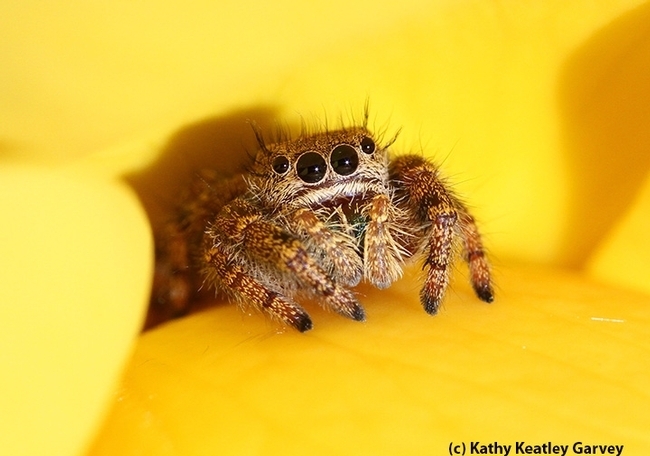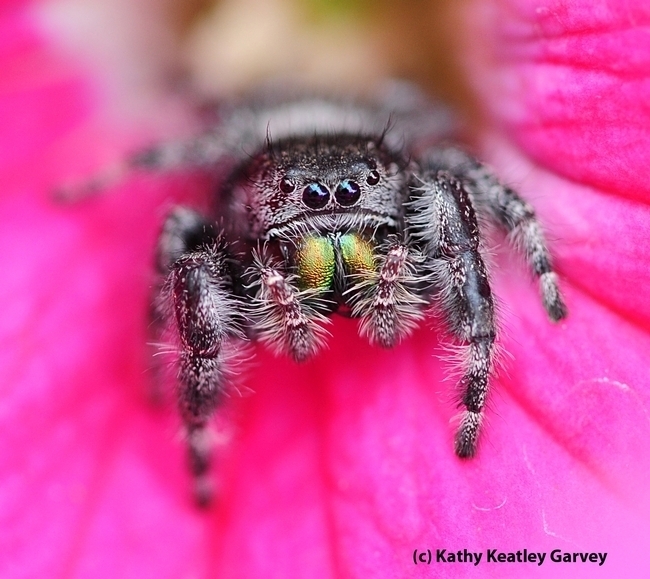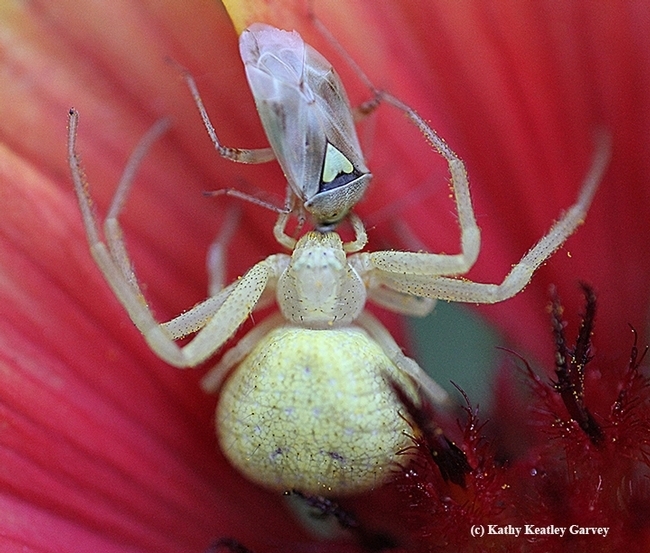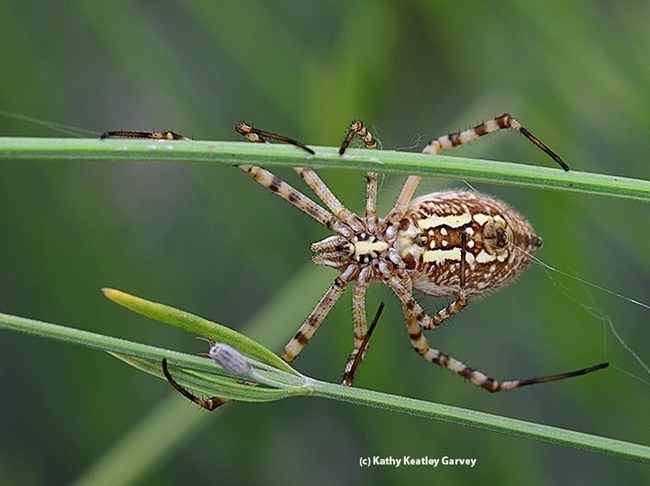- Author: Kathy Keatley Garvey
Hey, the sun's up! It's time to rise and shine! Maybe I'll shine before I rise...or maybe I'll...
Anyway, I just woke up, and I'm starting to stir. I'm ready to conquer the day. I shall
- Sip nectar
- Seek girlfriend
- Guard the flower patch by dive-bombing and chasing off all critters.
- Repeat.
The scenario: a male longhorned bee, Melissodes agilis, has just spent the night sleeping--and quite cozily at that--on a Mexican sunflower, Tithonia rotundifola.
He is Boy Bee With the Green Mesmerizing Eyes.
Boy Bee With the Green Mesmerizing Eyes does not know--nor would he care if he could--that today is the beginning of National Pollinator Week, an international annual event celebrating pollinator health.
According to the Pollinator Partnership, "pollination is a vital stage in the life cycle of all flowering plants. When pollen is moved within a flower or carried from one flower to another of the same species it leads to fertilization. This transfer of pollen is necessary for healthy and productive native and agricultural ecosystems." It's crucial to our ecosystem.
As the Pollinator Partnership says on its website:
- "About 75 percent of all flowering plant species need the help of animals to move their heavy pollen grains from plant to plant for fertilization."
- "About 1,000 of all pollinators are vertebrates such as birds, bats, and small mammals."
- "Most pollinators (about 200,000 species) are beneficial insects such as flies, beetles, wasps, ants, butterflies, moths, and bees."
But back to Boy Bee With the Mesmerizing Green Eyes.
Noted bee expert, the late Robbin Thorp, a UC Davis distinguished emeritus professor of entomology and co-author of California Bees and Blooms: A Guide for Gardeners and Naturalists (Heyday), used to talk about these little guys bullying all the floral tenants--from honey bees to syrphid flies to butterflies to lady beetles--and more.
Boy, do they move fast. A good time to photograph them is when they're sleeping or just waking up. Otherwise, try to capture images of them at a shutter speed of about 1/5000 of a second.
Happy Beginning of National Pollinator Week!
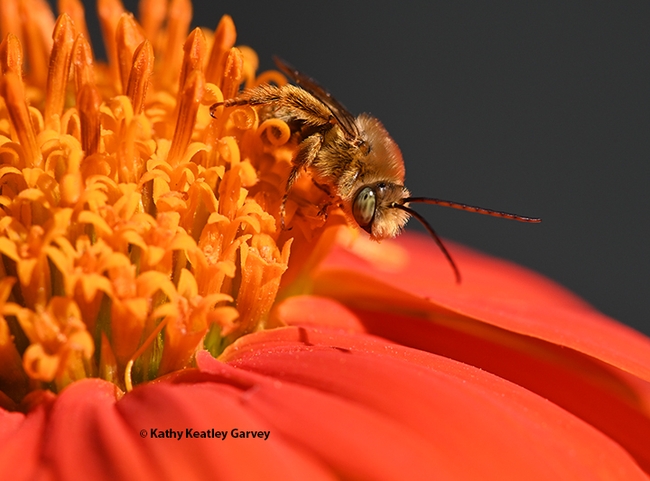
- Author: Kathy Keatley Garvey
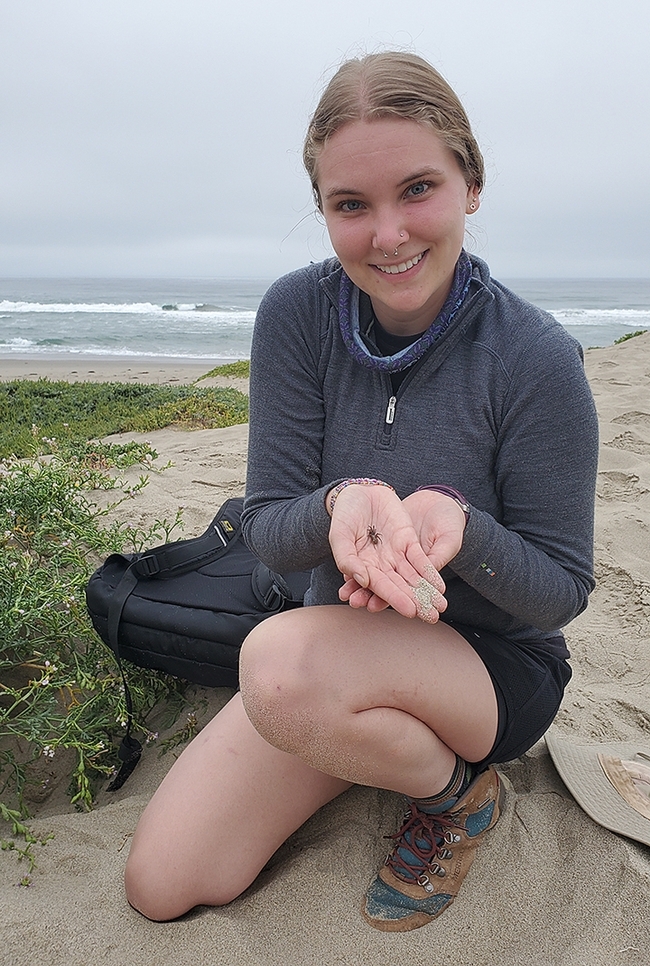
You'll win the distinction of being selected the winner, and you'll be acknowledged in a scientific paper.
What could be better?
One of the activities at the Bohart Museum of Entomology open house, "Eight-Legged Encounters," set from 1 to 4 p.m., Saturday, June 25, will be a "Name-That-Spider-Species" contest, open to students 18 and under. The focus: a male trapdoor spider, a new species from the genus Promyrmekiaphila.
The event will be co-hosted by the Bohart Museum and the American Arachnological Society (AAS).
The open house will kick off the annual meeting of AAS, which meets June 26-30 on the UC Davis campus, said arachnologist Jason Bond, associate dean, College of Agricultural and Environmental Sciences, and the Evert and Marion Schlinger Endowed Chair in Insect Systematics, UC Davis Department of Entomology and Nematology. Professor Bond is chairing the AAS conference with Lisa Chamberland, postdoctoral research associate of the Bond lab, and Joel Ledford, assistant professor of teaching, Department of Plant Biology, College of Biological Sciences.
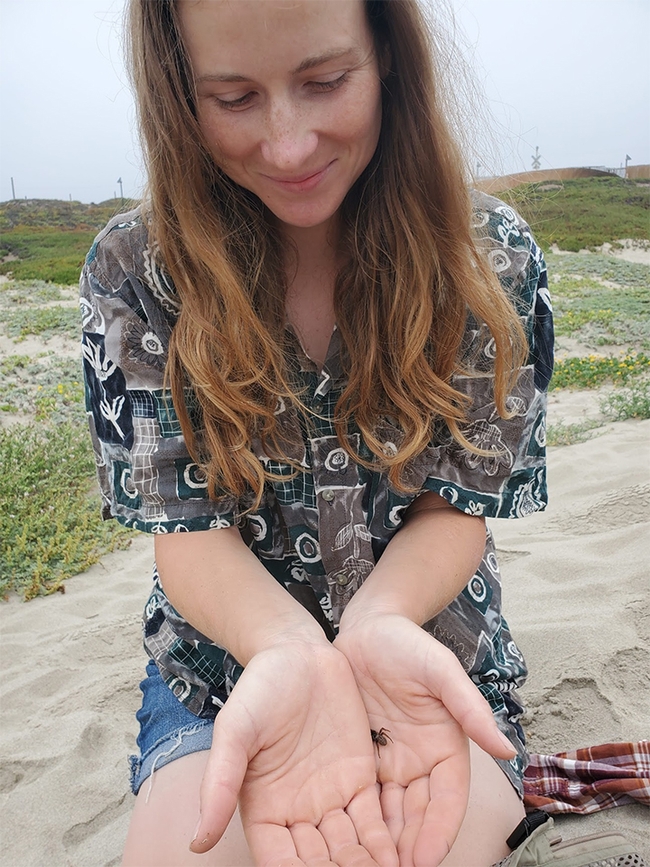
"The species was originally found in the early 2000s, but the first male was collected last October," said Jochim, a second-year doctoral student interested in the evolution and systematics of trapdoor spiders, particularly species that live in California's coastal dunes.
"The genus Promyrmekiaphilais a group of trapdoor spiders that construct silk-lined burrows with wafer-like trapdoor lids, usually decorated with plant material or substrate," Jochim explained. "It's found generally in the Southern Bay Area. As of now there are only two species in the genus, so this new species will be the third!"
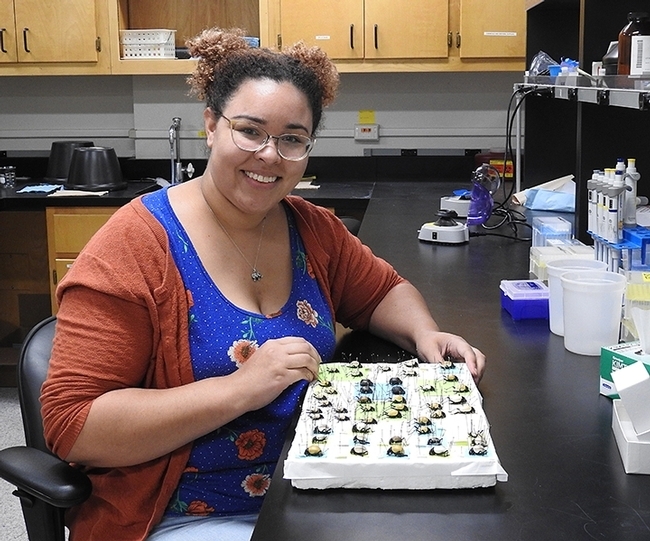
AAS member Eileen Hebets, professor at the University of Nebraska, Lincoln, is co-hosting the open house as part of a U.S. National Science Foundation grant, “Eight-Legged Encounters” that she developed as an outreach project to connect arachnologists with communities, especially youth.
Bohart Museum and AAS officials are encouraging the public to attend the open house to learn more about spiders and other arachnids. The Bohart Museum, directed by UC Davis distinguished professor Lynn Kimsey, houses a worldwide collection of eight million insect specimens; a live "petting zoo" (Madagascar hissing cockroaches, stick insects and tarantulas) and an insect-themed gift shop.
In addition to the open house, AAS has scheduled a series of arachnid lectures, free and open to the public, from 7:30 to 9 p.m. Tuesday, June 28, in the newly constructed 600-seat lecture hall, California Hall.

By the way, did you know that Professor Bond has named several trapdoor spiders for prominent people?
- President Barack Obama, Aptostichus barackobamai
- Actress Angelina Jolie, Aptostichus angelinajolieae
- Television host Stephen Colbert, Aptostichus stephencolberti
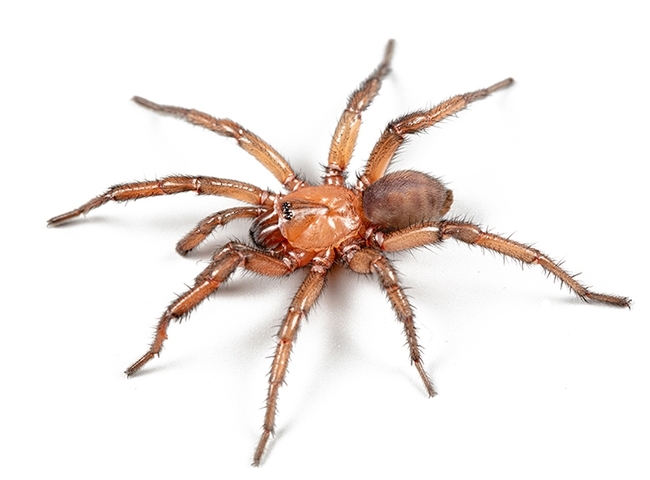
- Author: Kathy Keatley Garvey
I'm humbled and honored to have received two major awards this week from the Association for Communication Excellence (ACE). It's an international association of communicators, educators and information technologists who focus on communicating research-based information.
Frankly, I prefer to be behind the camera (not in front of it) and I'm accustomed to serving on award-nomination committees.
I did not attend the ACE annual conference, held June 12-14 in Kansas City, Mo. I was too busy working on faculty award packets and writing and photography projects--and I still haven't figured out how to be in two places at the same time.
However, my Missouri roots run deep. My great-grandfather, Samuel Davidson Laughlin, a six-foot-three Union color bearer in the Civil War, was born in Linn, Osage County. After the Civil War, he ventured west with his family, settled down, and built a round barn in Castle Rock, Wash., now on the National Register of Historic Places.
A distance of about 153 miles separates Linn from Kansas City. It's the "show me" state, so someday I'll show up.

- A feature story on former UC Davis entomology senior, Rebecca Jean "RJ" Millena, received the gold award or first place in the "writing for newspapers" category. Titled "An Amazing Doctoral Opportunity Few Receive," it appears on the UC Davis Department of Entomology and Nematology website at https://bit.ly/3MfuaLn
- A photo series on “The Flight of the Bumble Bee,” posted on my Bug Squad at https://bit.ly/3xuoPLN, won second place or the silver award in the photo series category.
Feature Story. The feature story traced RJ's childhood dream of becoming an entomologist to her doctoral fellowship. At age 5, when she entered her kindergarten class in Concord, Calif., she wrote on a poster, "When I grow up, I want to be an entomologist."
How many five-year-olds do you know who vow to launch a career in insect science on the first day of kindergarten?
At UC Davis, RJ worked as a student researcher in the laboratory of UC Davis distinguished professor Jay Rosenheim, where she studied the bizarre Strepsiptera endoparasites that attack their hosts, the Ammophila (thread-waisted) wasps. RJ went on to receive her bachelor's degree in entomology in 2021, and a rare four-year, full-ride doctoral fellowship from the American Museum of Natural History.
Where did she do her research at UC Davis? At the Bohart Museum of Entomology, which houses a worldwide collection of more than 30,000 Ammophila (among the Bohart's eight million specimens). As larvae, members of the order Strepsiptera, known as “twisted wings,” enter theirs hosts, including wasps and bees, through joints or sutures. Millena drew information and inspiration from UC Davis alumnus Arnold Menke, a global authority on Ammophila and author of "The Ammophila of North and Central America (Hymenoptera, Sphecidae).
As Professor Rosenheim explained: “Strepsiptera are very unusual among parasites in that the parasite is visible on the outside of the host's body. The head of the parasite protrudes between the sclerites on the abdomen. Looking across a growing list of species, RJ has shown that Ammophila species where mothers have more extended contact with their young--because they provision their nests with many, small caterpillars instead of one giant caterpillar--are at much greater risk of acting as inadvertent vectors of strepsipteran parasites to their young.”
“RJ has shown that this one feature explains something like 90 percent of the total variation across Ammophila species in the risk of parasitism,” Rosenheim related. “Ecology virtually never works in such a predictable way; this is one truly exceptional counterexample of nature being highly predictable. Anyway, RJ's work shows that sometimes parental care can be a double-edged sword; we usually think of parental care as providing enhanced protection of offspring from predators and parasites. In this case, it proves to be the reverse.”
Also quoted in the news story was Lynn Kimsey, director of the Bohart Museum and a UC Davis distinguished professor of entomology: “RJ is one of those rare students that is focused, task-oriented and simultaneously creative. She was great fun to have working in the museum.”
Photo Series. The photo series depicted in-flight images of a yellow-faced bumble bee, Bombus vosnesenskii, foraging on lupine at Bodega Bay. The Bug Squad blog drew attention to two books: California Bees and Blooms: A Guide for Gardeners and Naturalists (Heyday, 2014), the work of University of California scientists Gordon Frankie, Robbin Thorp, Rollin Coville and Barbara Ertter; and Bumble Bees of North America: An Identification Guide (Princeton University, 2014), co-authored by Thorp (1933-2019), a UC Davis distinguished emeritus professor of entomology.
As a devoted "bug person" (I've been writing this Bug Squad blog every night, Monday through Friday, since August 6, 2008), it's great to see insects featured in the ACE award presentations.
The sad part: Memories of my first Bug Squad blog, which spotlighted nationally known honey bee guru, UC Cooperative Extension apiculturist Eric Mussen. In the post, titled "A Honey of a Ride," he commented about a swarm of honey bees that "hitchhiked" on a UC Davis commuter van traveling from El Cerrito to the UC Davis campus. Sadly, in an unbearable loss to his family, friends, the entomological world, and beekeeping/bee-breeding industries, Eric Mussen died June 3 at age 68 of liver cancer/failure after receiving a diagnosis only a few days before. A celebration of life will take place at the UC Davis Putah Creek Lodge as soon as July or August.
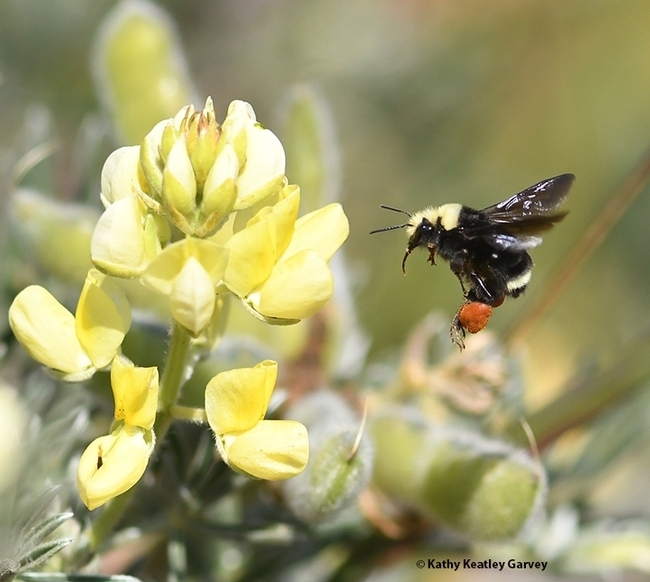
- Author: Kathy Keatley Garvey
If I had a pet jumping spider--which I don't--I'd name him "Jumping Jehosphaphat."
"The biblical king Jehoshaphat is the inspiration for the exclamation 'jumpin' Jehosaphat!' This alliterative idiom probably arose in the 19th century but was popularized by the cartoon character Yosemite Sam in the 20th century."--A Way With Words.
Don't know if any of the arachnologists attending the American Arachnological Society (AAS) meeting, June 26-30 at UC Davis, will say "Jumping Jehosphaphat." Probably not. (Maybe "If I say jump, you ask how high?")
However, when they kick off their conference with an open house, "Eight-Legged Encounters," at the Bohart Museum of Entomology from 1 to 4 p.m., Saturday, June 25, jumping spiders will be one of the species showcased. Some 20 tables of exhibits and activities will line the hall of the Academic Surge Building on Crocker Lane. It's free, open to the public, and family friendly.
The Bohart Museum, directed by UC Davis distinguished professor Lynn Kimsey, is the home of a worldwide collection of eight million insect specimens. It also houses a live "petting zoo" (Madagascar hissing cockroaches, stick insects and tarantulas) and an insect-themed gift shop.
A powerhouse of the nation's arachnologists will participate at the open house, according to arachnologist Jason Bond, associate dean, College of Agricultural and Environmental Sciences, and the Evert and Marion Schlinger Endowed Chair in Insect Systematics, UC Davis Department of Entomology and Nematology. He's chairing the conference with Lisa Chamberland, postdoctoral research associate, Department of Entomology and Nematology, and Joel Ledford, assistant professor of teaching, Department of Plant Biology, College of Biological Sciences.
Professor Eileen Hebets of the School of Biological Sciences, University of Nebraska, Lincoln, is co-hosting the Bohart open house as part of a U.S. National Science Foundation (NSF) grant, “Eight-Legged Encounters” that she developed as an outreach project to connect arachnologists with communities, especially youth. She seeks to educate the public “about the wonders of biology and the possibility of scientific discovery using a charismatic and engaging group of animals--arachnids. Arachnids (spiders and their relatives) are ubiquitous, thriving in most habitable environments on our planet (including underwater),” as mentioned on her website.
Jumping spiders, which belong to the family Salticidae, are "a large diverse group of spiders of about 4,000 species worldwide, and 300 in the United States," according to a Bohart Museum fact sheet that Kimsey authored. "These spiders are relatively small, usually less than 1 cm long. They are often brightly colored with reds, whites and even metallic green, particularly their chelicerae (jaws). They are extraordinary jumpers, and are known to be able to jump distances more than 10 to 40 times their body length."
Fact is, jumping spiders don't weave webs to catch their prey. They lie in wait and then pounce. "Jumping spiders are carnivores and can be effective garden pest control agents," Kimsey says. "They eat insects and other spiders about their size or smaller. They do not spin webs for catching prey, but may use a silken thread as an anchor as they climb down a vertical surface. These spiders are generally harmless to humans. They can bite, but this normally only happens when the spider is being crushed or other similar situation where its threatened with damage. The bites range from asymptomatic to small, mosquito-bite-sized welts. They are not as severe as a bee sting."
We've seen jumping spiders grab honey bees, syrphid flies, butterflies and other unsuspecting critters.
I never once thought of naming a jumping spider, but if I did, "Jumping Jehosphaphat!" would do.
At the open house, plans call for “A Name-that-Spider-Species" contest, coordinated by postdoctoral fellow Lisa Chamberland and doctoral students Iris Bright and Emma Jochim of the Bond lab. “We'll have an exhibit at the event with details on the spider (a male spider from the genus Promyrmekiaphila),” Bond said. “We'd like to restrict naming suggestions to be youths attending the event, students 18 years and younger."
"Lisa, Iris, and Emma have a poster put together on it," Bond said. The prize? The honor of naming the species and acknowledgment in a scientific paper.
Let's see...How about an individual name for the spider? Warrior, Speedster, Von Trapp, Fang, Charlotte, Spidey, or Itsy Bitsy?
Nah. How about Jumping Jehoshaphat?
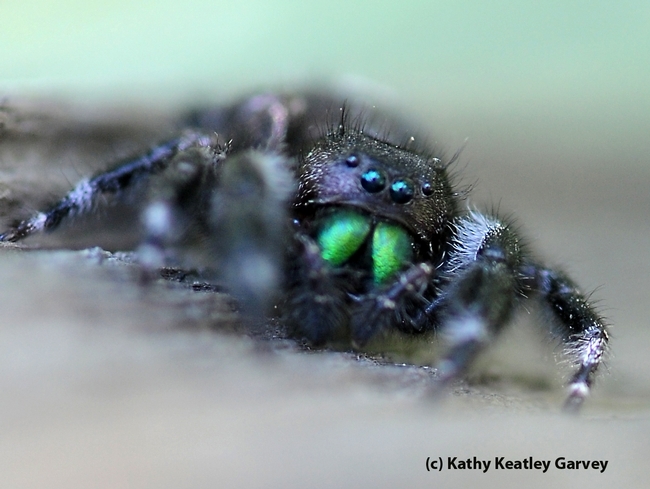
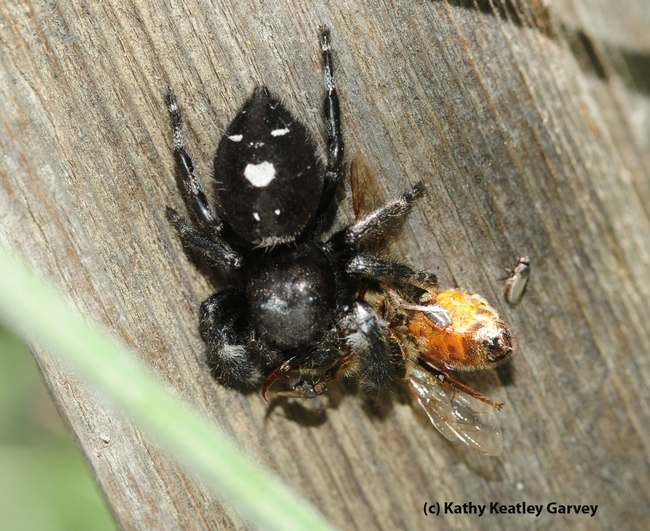
- Author: Kathy Keatley Garvey
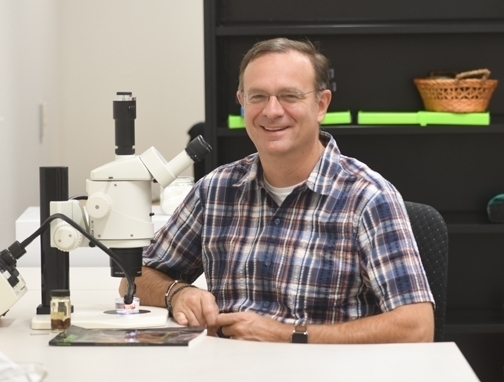
Of course, you have!
You love spiders! Yes? No? Well, maybe you just...umm...like them?
Or, maybe spiders fascinate you and you want to know more about them?
You're in luck.
Members of the American Arachnological Society are gathering on the UC Davis campus next week and they'll kick off their June 26-30 scientific meeting with a family friendly open house at the Bohart Museum of Entomology.
The open house, themed, "Eight-Legged Encounters," will take place from 1 to 4 p.m., Saturday, June 25 in hallways of the Academic Surge Building on Crocker Lane. The lecture series is from 7:30 to 9 p.m. Tuesday, June 28, in the newly constructed 600-seat lecture hall, California Hall. Both events are free and open to the public.
Why should folks attend?
"As a relative newcomer to arachnology, I would say the diversity of arachnids from scorpions to ticks to camel spiders is a good reason to attend," said Tabatha Yang, the Bohart Museum's education and outreach coordinator. "There are a lot of false myths and misundertandings about these creatures. As they say 'knowledge is power' and so everyone who attends the Saturday event and/or the Tuesday evening talks could come away mighty powerful. Also, you don't have to love them to be curious about them. Knowledge can also conquer fears."
Professor Bond offers five good reasons to like spiders:
- Spiders consume 400-800 million tons of prey, mostly insects, each year. Humans consume somewhere around 400 million tons of meat and fish each year.
- Spider silk is one of the strongest naturally occurring materials. Spider silk is stronger than steel, stronger and more stretchy than Kevlar; a pencil thick strand of spider silk could be used to stop a Boeing 747 in flight.
- Some spiders are incredibly fast--able to run up to 70 body lengths per second (10X faster than Usain Bolt).
- Although nearly all 47,000-plus spider species have venom used to kill their insect prey, very few actually have venom that is harmful to humans.
- Some spiders are really good parents--wolf spider moms carry their young on their backs until they are ready to strike out on their own; female trapdoor spiders keep their broods safe inside their burrows often longer than one year, and some female jumping spiders even nurse their spiderlings with a protein rich substance comparable to milk.
Lots of Exhibits and Activities. Some 20 exhibits and activities--educational and entertaining--will be set up in the hallway of the Academic Surge Building. “There will be everything--spider specimens, live arachnids, activities, artwork, etc., at the open house," Bond said.
A powerhouse of arachnologists will participate, Bond said. Professor Eileen Hebets of the School of Biological Sciences, University of Nebraska, Lincoln, is co-hosting the open house as part of a U.S. National Science Foundation (NSF) grant, “Eight-Legged Encounters” that she developed as an outreach project to connect arachnologists with communities, especially youth. She seeks to educate the public “about the wonders of biology and the possibility of scientific discovery using a charismatic and engaging group of animals--arachnids. Arachnids (spiders and their relatives) are ubiquitous, thriving in most habitable environments on our planet (including underwater),” as mentioned on her website, https://hebetslab.unl.edu/
“They are tremendously diverse in their form, behavior, sensory systems, and general natural histories; making arachnid ecology and evolution fertile ground for teaching a breadth of Science, Technology, Engineering, and Math (STEM) knowledge content," Hebets says on her website. "The diversity of arachnid biology allows us to fluidly integrate concepts and knowledge from fields as disparate as anatomy, physiology, development, animal behavior, predator ecology, biomechanics, biomime
Youths Innately Curious. As a scientist, a mother and an education, Hebets says she often sees "the disconnect between youth and the world around them; between problem solving skills, observation skills, critical thinking, natural curiosity and the more traditional formal teaching programs experienced by many students. Youth are innately curious and tremendously creative and my aim is to leverage these traits for their own educational advancements in a fun and engaging manner.” To date, Hebets and her collaborators have developed more than 25 modular activity stations “encompassing arts and crafts, experiments, games, and other hands-on activities." They include classification and taxonomy, spiders and silk, path of predators, and hands-on science.
Name That Spider. Another activity at the open house should be a big draw. Plans call for “A Name that Spider" event, coordinated by postdoctoral fellow Lisa Chamberland and doctoral students Iris Bright and Emma Jochim of the Bond lab. “We'll have an exhibit at the event with details on the spider,” Bond said. “We'd like to restrict naming suggestions to be youths attending the event, students 18 years and younger."
The Bohart Museum, directed by UC Davis distinguished professor Lynn Kimsey, is the home of a worldwide collection of eight million insect specimens. It also houses a live "petting zoo" (Madgascar hissing cockroaches, stick insects and tarantulas) and an insect-themed gift shop.
It's time to get acquainted with spiders and other arachnids!
